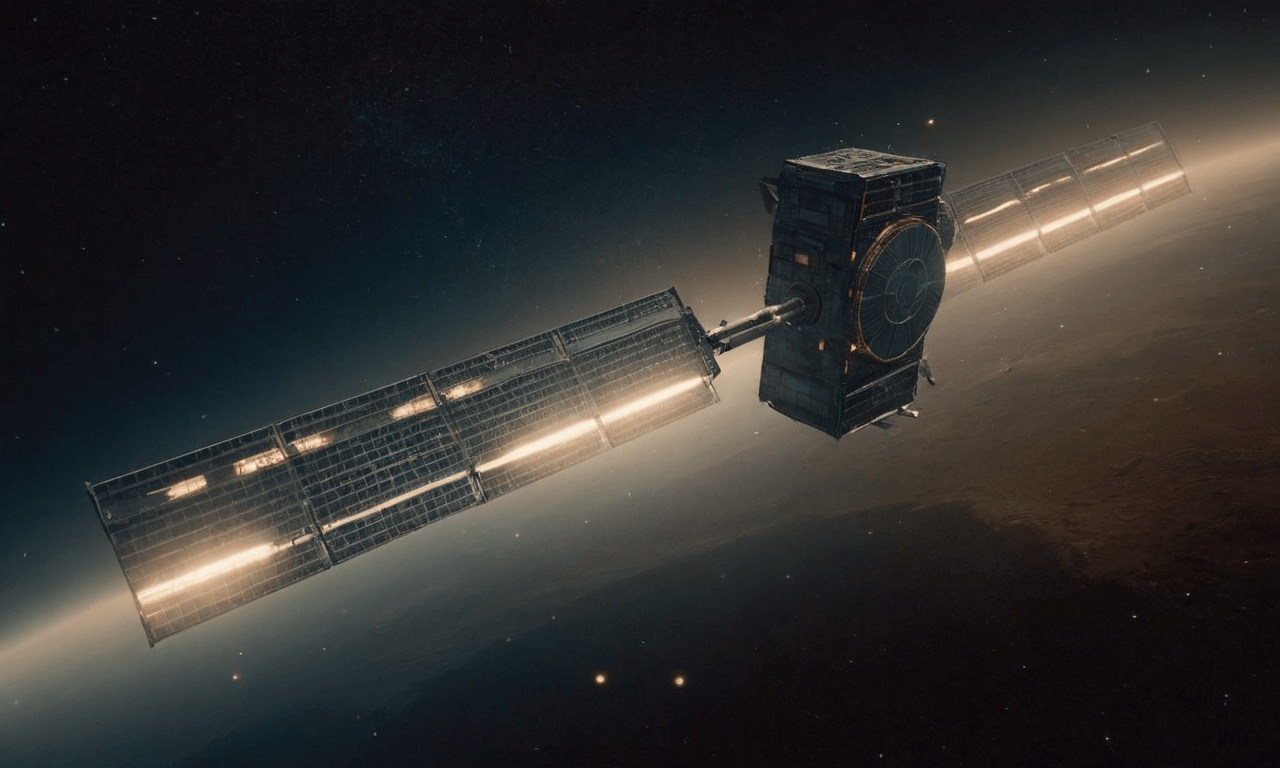· space brief · 4 min read
Space Brief 27 Oct 2024
Today's brief covers SpaceX's latest Starlink launch, updates on Crew-8's return, and preparations for the SLS Artemis II mission.

📄Top Stories
SpaceX successfully launched 22 Starlink satellites into orbit, marking the company’s 100th Falcon 9 mission of the year. A NASA Crew-8 astronaut was released from the hospital after returning from space, while preparations continue for the Artemis II mission amid potential delays. Each story highlights significant ongoing developments in satellite operation and space exploration.
📰Detailed Coverage
Starlink Expansion: 22 More Satellites Launched
SpaceX’s relentless push to extend its Starlink internet constellation continues with the successful launch of 22 additional satellites from Cape Canaveral Space Force Station. The Falcon 9 rocket took off at 5:47 p.m. EDT, and its first stage performed a textbook landing on the “Just Read the Instructions” droneship in the Atlantic Ocean. This mission underscores SpaceX’s aggressive expansion, having completed 66 Starlink-specific launches in 2024 alone.
This latest addition elevates the Starlink constellation to over 6,400 active satellites, enhancing global internet coverage. These deployments are of great interest to satellite trackers, who can see their impacts firsthand. Track Starlink satellites on our web app to observe these changes over time.
Read the full story: Space.com
Crew-8 Astronaut Released from Medical Observation
Following the safe return from an eight-month stint in space, a member of NASA’s Crew-8 was temporarily hospitalized as a precaution for an undisclosed medical condition. The astronaut, now cleared and back in Houston, continues recovery among family and colleagues. NASA refrains from revealing personal health details, maintaining privacy protocols post spaceflights.
This event underscores the physical demands of space travel and the protocol-driven safety measures in place. The healthcare of astronauts post-mission is pivotal for ensuring their swift reintegration, supporting further advancements in manned space missions.
Read the full story: SpaceNews
Artemis II and SLS: Towards Human Spaceflight
NASA continues preparing its Space Launch System (SLS) for the upcoming Artemis II mission, poised as its first crewed launch. However, challenges with the Orion spacecraft have sparked concerns about potential delays. Upgrades for future missions are concurrently in development, aiming to refine the SLS systems’ reliability and payload capacity.
These preparations are critical as Artemis II aims to establish humanity’s sustained presence on the Moon. Satellite trackers can look forward to increased data and insights following these missions, enabling deeper exploration of lunar environs.
Read the full story: NASASpaceFlight
🛰️Satellite Spotlight
- Satellite Name: TESS
- NORAD ID: 43435
- Launch Date: 2018-038A
- Mission: The Transiting Exoplanet Survey Satellite (TESS) hunts for new exoplanets through all-sky surveys, enhancing our understanding of stellar compositions and characteristics.
- Orbit: Inclination: 52.528°, Period: Approx. 18587 minutes, Eccentricity: High elliptical
- Operator: NASA’s Goddard Space Flight Center (GSFC)
- Fun Fact: TESS is responsible for discovering a multitude of exoplanets by monitoring changes in starlight, indicating potential planets passing by.
Current TLE Data:
1 43435U 18038A 24301.28436060 -.00001131 00000-0 00000+0 0 99994
2 43435 52.5280 59.5871 4679050 120.8706 10.5469 0.07747227 1117
Track this satellite in real-time on our web app: Track TESS
Upcoming Space Launches
October 29
- SpaceX Falcon 9:
- Starlink Group 9-9 from Vandenberg Space Force Base, CA, USA (11:30 UTC) A batch of satellites for the Starlink mega-constellation - SpaceX’s project for space-based Internet communication system.
- China Aerospace Science and Technology Corporation Long March 2F/G:
- Shenzhou 19 from Jiuquan Satellite Launch Center, People’s Republic of China (20:17 UTC) Eighth crewed flight to the Chinese space station.
October 30
- Mitsubishi Heavy Industries H3-22:
- DSN 3 (Kirameki 3) from Tanegashima Space Center, Japan (06:46 UTC) A geostationary communications satellite for military communications by the Japanese military.
- SpaceX Falcon 9:
- Starlink Group 10-13 from Cape Canaveral SFS, FL, USA (21:10 UTC) A batch of satellites for the Starlink mega-constellation - SpaceX’s project for space-based Internet communication system.
October 31
- Galactic Energy Ceres-1:
- Unknown Payload from Jiuquan Satellite Launch Center, People’s Republic of China (00:00 UTC)
- Russian Space Forces Soyuz 2.1b:
- Kosmos (Unknown Payload) from Plesetsk Cosmodrome, Russian Federation (07:00 UTC) Russian military payload of unknown purposes.
November 3
- SpaceX Falcon 9:
- Starlink Group 6-77 from Cape Canaveral SFS, FL, USA (21:57 UTC) A batch of satellites for the Starlink mega-constellation - SpaceX’s project for space-based Internet communication system.
November 4
- Rocket Lab Electron:
- Changes In Latitudes, Changes In Attitudes from Rocket Lab Launch Complex 1, Mahia Peninsula, New Zealand (10:30 UTC) Launch of a yet to identified satellite to SSO for an undisclosed customer, suspected to be E-Space.
- Russian Federal Space Agency (ROSCOSMOS) Soyuz 2.1b/Fregat-M:
- Ionosfera-M 1 & 2 from Vostochny Cosmodrome, Siberia, Russian Federation (23:18 UTC) Ionosfera is a constellation of four ionospheric and magnetospheric research satellites developed for Roscosmos.
Note: Launch dates and times are subject to change due to technical or weather considerations.





